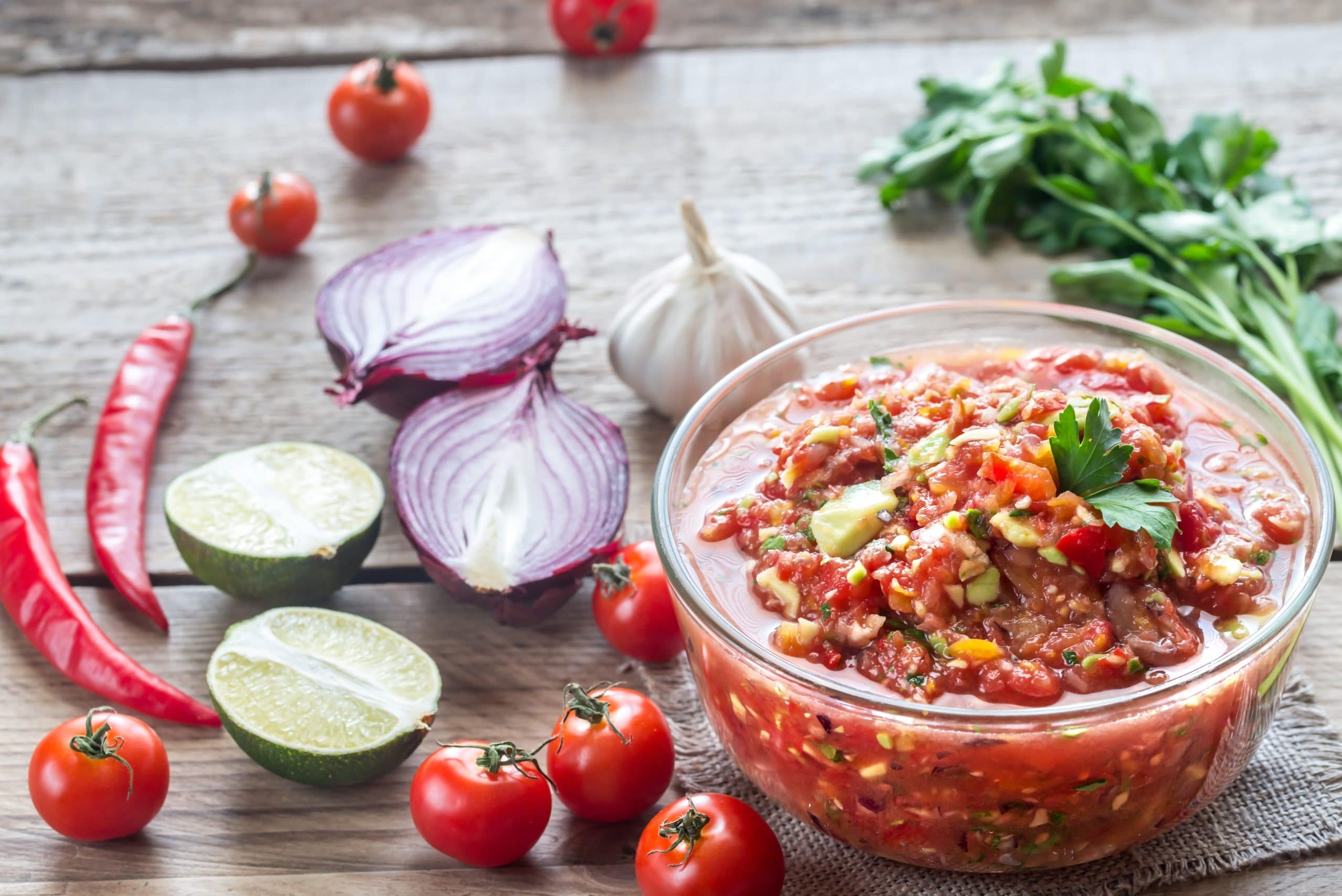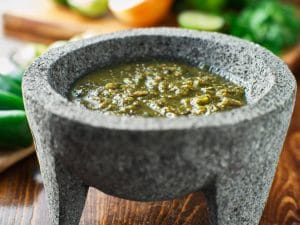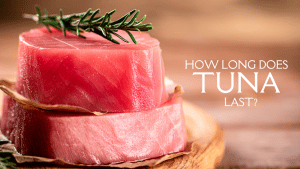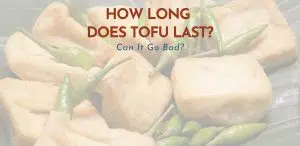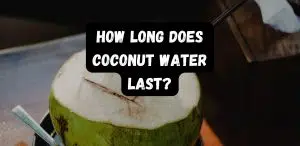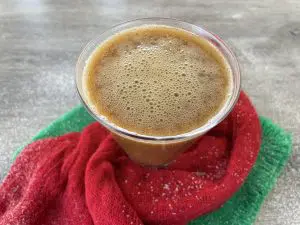How Long Does Salsa Last?
Important Note: When you buy through our links, we may earn a commission. As an Amazon Associate we earn from qualifying purchases. Content, pricing, offers and availability are subject to change at any time - more info.
You can sneak a jar of salsa (store-bought or homemade) into pretty much any dish to spruce it up with a hint of Mexican cuisine. Yet, despite its popularity, we often have a half-open jar of salsa sitting in the fridge for weeks, if not months, without us giving it a second glimpse. So can salsa go rotten, and if so, after how long?
Store-bought refrigerated salsa is best to consume within the use-by date, but it can last another five days in the fridge if unopened. Then, store-bought unrefrigerated salsa stays fresh for a month if you refrigerate it once opened. Lastly, homemade salsa lasts a maximum of a week in the fridge.
Salsa is a delicious and convenient staple condiment to keep in our pantry or refrigerator. It pairs with so much more than tacos or nachos; you can combine a jar of salsa into a comforting yet spicy dish like ravioli, quinoa stuffed peppers and skillet chicken fajitas. But, how long can we store salsa before it turns rancid? Let’s find out!
- How Long Does Salsa Last?
- Refrigerated vs. Unrefrigerated vs. Homemade Salsa
- How To Properly Store Salsa?
- How To Tell If Salsa Is Rotten Or Spoiled?
- So, How Long Does Salsa Last?
How Long Does Salsa Last?
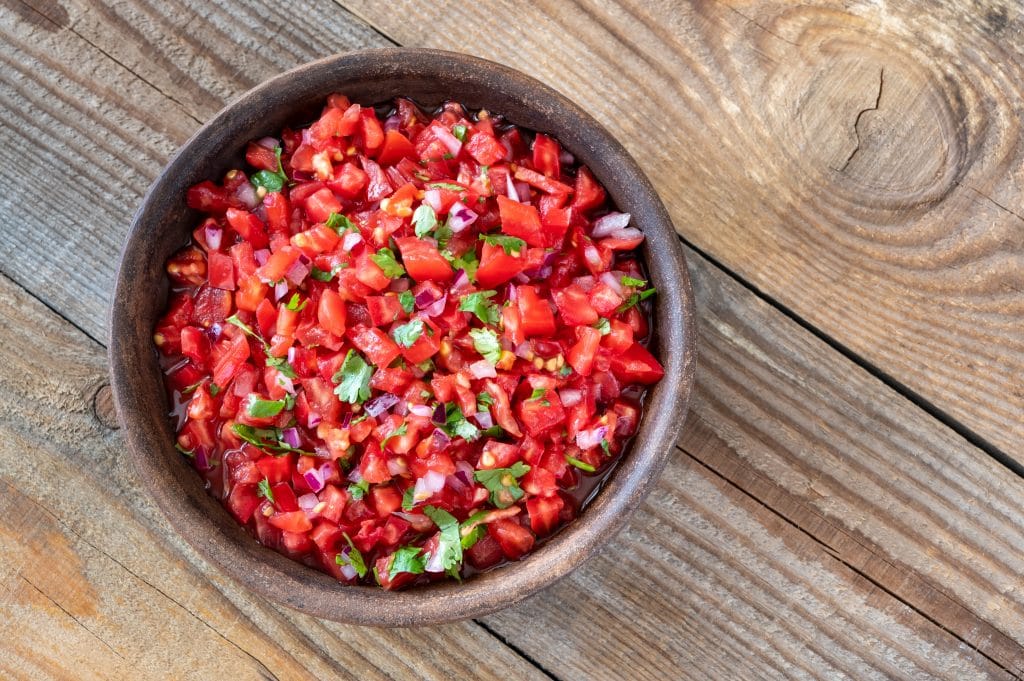
The shelf life of salsa primarily depends on the production method and list of ingredients. We need to make a general note that most salsa recipes contain a handful of perishable foods, so even though it can contain preservatives to increase its shelf life, the salsa won’t last as long as other condiments after opening it.
If you purchase salsa from the store, you’ll find two main varieties:
- Salsa in the non-refrigerated shelf section: non-refrigerated salsa stored in a sealed jar typically contains more unnatural preservatives, which lasts longer than refrigerated salsa.
- Salsa in the refrigerated section: refrigerated salsa usually indicates that it only contains natural preservatives like citric juice or vinegar and tends to perish faster than the other option you’ll find resting on the shelf.
Note: Although commercially sold salsa has a “best by” or “use-by” date, this only indicates the last date that the manufacturer guarantees the product quality, not expiration. So, you can still safely use salsa even after the best-by date lapses.
Store-Bought Unrefrigerated
Store-bought unrefrigerated salsa rests on the aisles next to other long-lasting condiments and sauces. Unrefrigerated salsa lasts much longer than refrigerated and homemade salsa; it is an excellent go-to if you’d like to purchase it without using it immediately.
The commercially bottled and unrefrigerated salsa generally has a “best by date” indicated somewhere on the label. This date is a rough estimation of when the salsa’s flavor quality will diminish or start to go off. However, manufacturers generally pasteurize the unrefrigerated varieties, so an unopened bottle of salsa can last several months past its best by date if it’s unopened.
Note that you’ll want to refrigerate the salsa after opening it. Then, it only lasts several weeks or up to a month before turning rancid.
Store-Bought Refrigerated
Store-bought refrigerated salsa generally lasts a bit longer than homemade salsa, especially before opening it.
Store-bought refrigerated salsa often has a “use by” date that roughly estimates how long the salsa will remain fresh in the fridge; however, if unopened, it can last about another five days past this date.
Once you open the salsa, you’ll want to finish or discard the jar within five to seven days. However, please note that it won’t retain the quality for another week if you only open it after the recommended “use by” date. So, you will want to use it within two to three days.
Homemade
Lastly, for the DIY enthusiast who loves playing around the kitchen, homemade salsa tastes a million times better than store-bought salsa, but it does not stay fresh for nearly as long. So, your goal will be to whip up just enough to enjoy in a single sitting.
However, if your eyes as larger than your appetite or you want to save time by prepping salsa in advance, note that it generally stays fresh for about four or five days (maximum of a week) if you refrigerate it properly. The perishable ingredients you add to your homemade salsa will impact whether you can stretch the salsa life by another day or two or turn bad before the five days.
If you notice the salsa discoloring or turning bad before four or five days, it’s best to discard it anyway.
Refrigerated vs. Unrefrigerated vs. Homemade Salsa
Here is a rough estimation of how long store-bought refrigerated, store-bought unrefrigerated, and homemade salsa lasts. Please remember these are guidelines, and your specific brand of salsa may last a little longer or perish before the estimated date.
| Type of salsa | Pantry | Fridge |
| Store-bought unrefrigerated, unopened | “Best by” date + 6 months | |
| Store-bought unrefrigerated, opened | Do not store in the pantry after opening | Maximum of 1 month |
| Store-bought refrigerated, unopened | It needs to be refrigerated | “Use-by” date + 5 days |
| Store-bought refrigerated, opened | It needs to be refrigerated | 5 to 7 days |
| Homemade salsa | It needs to be refrigerated | 4 to 5 days |
How To Properly Store Salsa?
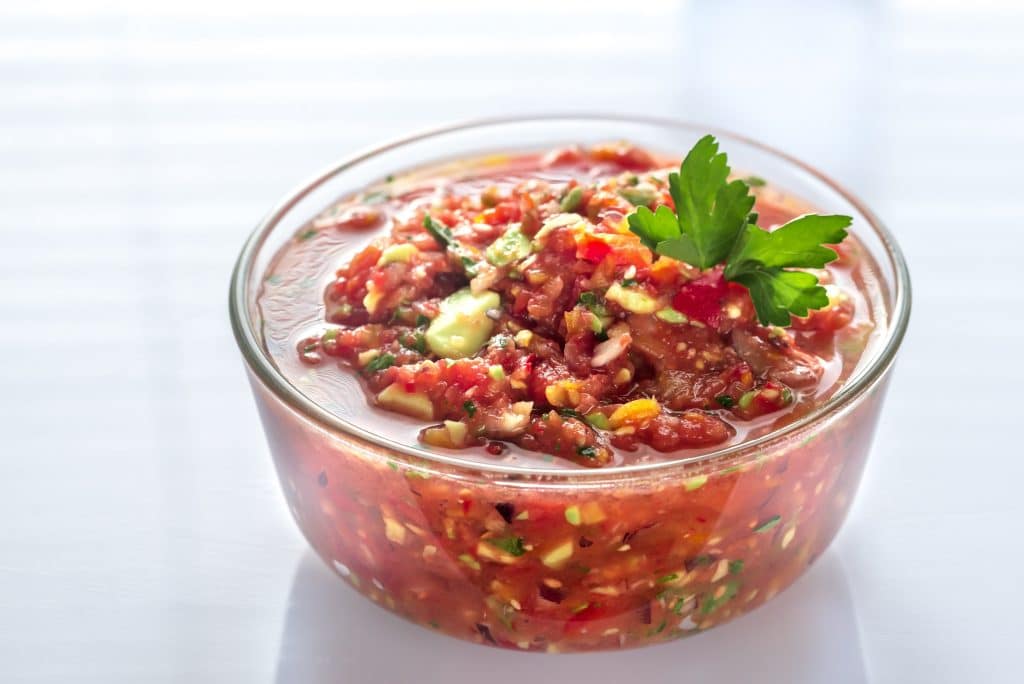
The storage guidelines of each variety are slightly different. So, we will discuss each one individually.
However, applicable to all condiments and salsas, you’ll want to keep track of how long the jar has been open. Try to make it a concerted effort to label the bottle of salsa as soon as you open it.
Let’s be honest, with our hectic and tedious schedules and five million things to remember, the exact date we open a condiment or salsa jar is the last thing that hits the priority list. So, immediately writing the date down with a permanent marker or on a piece of tape allows you to keep track of how long the salsa has been opened for, preventing you from an upset tummy.
Store-Bought Unrefrigerated
Salsa can last up to six months after the “best by” date if unopened.
Note that salsa and other safe items to store at room temperature should be kept in a cool, dark place like a pantry. You’ll want to avoid keeping the salsa in a warm cabinet above the oven or near a dishwater and refrigerator exhaust.
Once opened, refrigerating store-bought unrefrigerated salsa is essential! Popping the jar of salsa into the fridge ensures that the condiment stays fresh for a more extended period while keeping the quality intact.
You can keep most salsas in their original jars and bottles when storing them in the fridge. Still, if you open a can of salsa, it’s best to transfer the leftover salsa into an airtight container to ensure safety and optimal quality.
Lastly, I’m aware that most of us keep sauces, including salsa, in the pantry and fridge for more extended periods than the guidelines suggest. So, follow the table provided above as a baseline and ensure you are attentive to general signs of spoilage (discussed later on).
Store-Bought Refrigerated
The storage guidelines stay pretty straightforward for the store-bought salsa you found in the refrigerated aisle.
As no surprise, you’ll need to store items bought in the refrigerated section at cold temperatures to keep them fresh. So, pop the jar of salsa into the fridge as soon as you get home from the store.
Most producers do not recommend storing salsa in the freezer as the texture and quality may change after defrosting.
Homemade
Most homemade salsas or dips will require refrigeration.
Aim to make just enough salsa for one sitting. However, if this fails or you aren’t planning on using the whole jar of homemade salsa, at least serve a couple of spoons separately instead of offering the entire bowl or bottle of salsa.
While using one container requires less clean-up, it’s unhygienic to dip your chips, veggies, or fries into the jar. In fact, it’s a sure way of spreading bacteria that will not only contaminate the salsa but cause it to go bad prematurely.
Then, if you plan to make homemade salsa and preserve it, ensure that you strictly follow research-tested recipes. Most salsa recipes contain a combination of low-acid foods like onions and peppers and high-acid foods like tomatoes, vinegar, and lemon juice. The ratio between these ingredients is critical to master to prevent botulism outbreaks.
How To Tell If Salsa Is Rotten Or Spoiled?
Salsa without any spoilage signs is generally safe to enjoy even several days after the use-by and best-by dates. Use your senses — if you cannot smell, see, or taste anything that may indicate warning signs, you can still eat it.
However, note that there are certain health risks linked to spoiled foods. So, aim to practice food safety and enjoy salsa before its shelf life expires.
Practicing proper food safety techniques and hygiene will help prevent foodborne illnesses. Fortunately, there are several straightforward ways to recognize the signs of rotten or spoiled salsa that will help prevent contracting any health issues or upset tummies.
While consuming the salsa as soon as possible after you open the jar is the safest solution, this option doesn’t always work out. So, here are four straightforward and valuable tips to help you determine when it’s best to drop the salsa into the bin instead of placing it on the table.
Odor Changes
The first sign that will indicate if the salsa is rotten is an unpleasant, sour odor. However, it can exhibit a horrible, fishy smell in some cases.
If your salsa smells rancid, avoid eating it as it can cause food poisoning. Instead, discard the salsa immediately and wash your hands with warm water and soap.
Color And Texture
When you first open store-bought salsa or make homemade salsa, it is generally orange to bright red. However, as the days pass, it may turn into a maroon or brownish shade; this indicates that it’s no longer safe to use.
Keep in mind that the same applies to a thickening on the surface of the salsa. If you notice a rubbery later on the top of the jar, throw the salsa away.
Moldy Spots
If you open the jar of salsa and notice black or greenish fungal growth or a whitish powdery layer on the surface layer, discard the bottle of salsa.
Please do not remove the top layer of moldy salsa with a spoon, as you can still contaminate the rest of the content. In addition, bacteria may have already spread throughout the whole jar of salsa − just because you cannot see the microscopic bacteria does not mean that it isn’t there!
So, discard the salsa jar immediately if you notice mold or organic growth signs, whether on the surface or inside the jar.
Offish Taste
Lastly, if the salsa’s general appearance and odor seem to be in perfect order, but the taste seems a little off, throw it out for quality purposes.
Rancid salsa can have a sour or tangy taste. So, even if the taste is only slightly off, it’s better to play it safe and discard the salsa than contract food poisoning.
Avoid the gamble and whip up a new jar of salsa, or save the recipe for later on in the week after you purchase a new bottle at the store.
So, How Long Does Salsa Last?
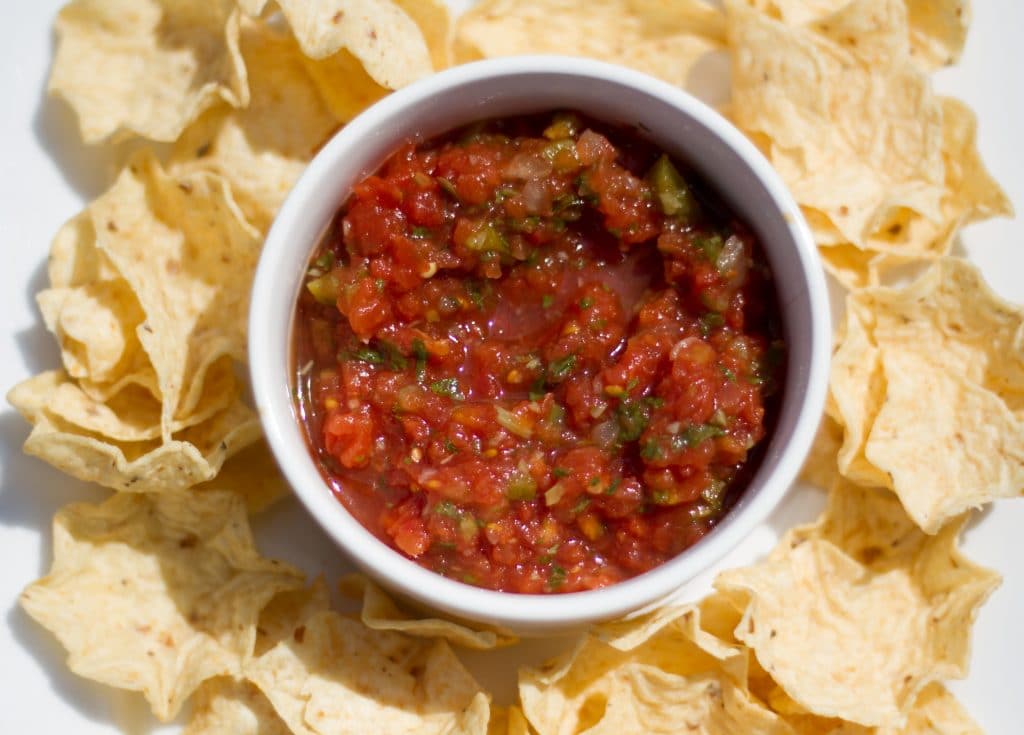
The ingredients, preparation process, and added preservatives determine how long salsa truly lasts. However, as a general rule, please pay attention to the use-by and best-by dates and follow them as a general guideline.
Always remember to keep salsa in the refrigerator after opening the jar and keep a close eye for moldy spots, discoloration, thickening, a sour or fishy odor, and an offish and tangy taste. We recommend playing it safe to avoid contracting health issues.
More importantly, enjoy combining salsa into new dishes before shoving it into the back of the fridge until it turns rotten.
